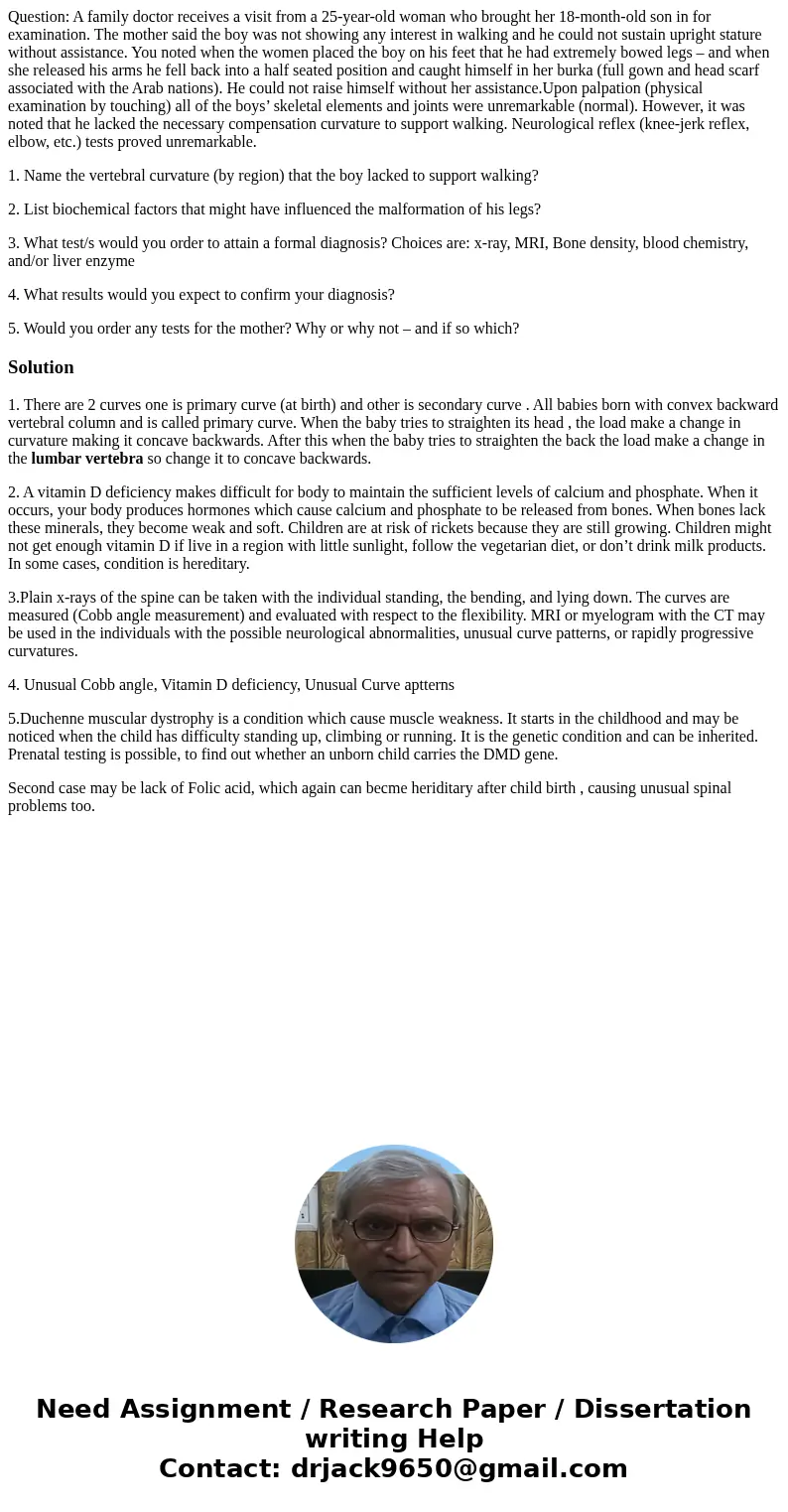Question A family doctor receives a visit from a 25yearold w
Question: A family doctor receives a visit from a 25-year-old woman who brought her 18-month-old son in for examination. The mother said the boy was not showing any interest in walking and he could not sustain upright stature without assistance. You noted when the women placed the boy on his feet that he had extremely bowed legs – and when she released his arms he fell back into a half seated position and caught himself in her burka (full gown and head scarf associated with the Arab nations). He could not raise himself without her assistance.Upon palpation (physical examination by touching) all of the boys’ skeletal elements and joints were unremarkable (normal). However, it was noted that he lacked the necessary compensation curvature to support walking. Neurological reflex (knee-jerk reflex, elbow, etc.) tests proved unremarkable.
1. Name the vertebral curvature (by region) that the boy lacked to support walking?
2. List biochemical factors that might have influenced the malformation of his legs?
3. What test/s would you order to attain a formal diagnosis? Choices are: x-ray, MRI, Bone density, blood chemistry, and/or liver enzyme
4. What results would you expect to confirm your diagnosis?
5. Would you order any tests for the mother? Why or why not – and if so which?
Solution
1. There are 2 curves one is primary curve (at birth) and other is secondary curve . All babies born with convex backward vertebral column and is called primary curve. When the baby tries to straighten its head , the load make a change in curvature making it concave backwards. After this when the baby tries to straighten the back the load make a change in the lumbar vertebra so change it to concave backwards.
2. A vitamin D deficiency makes difficult for body to maintain the sufficient levels of calcium and phosphate. When it occurs, your body produces hormones which cause calcium and phosphate to be released from bones. When bones lack these minerals, they become weak and soft. Children are at risk of rickets because they are still growing. Children might not get enough vitamin D if live in a region with little sunlight, follow the vegetarian diet, or don’t drink milk products. In some cases, condition is hereditary.
3.Plain x-rays of the spine can be taken with the individual standing, the bending, and lying down. The curves are measured (Cobb angle measurement) and evaluated with respect to the flexibility. MRI or myelogram with the CT may be used in the individuals with the possible neurological abnormalities, unusual curve patterns, or rapidly progressive curvatures.
4. Unusual Cobb angle, Vitamin D deficiency, Unusual Curve aptterns
5.Duchenne muscular dystrophy is a condition which cause muscle weakness. It starts in the childhood and may be noticed when the child has difficulty standing up, climbing or running. It is the genetic condition and can be inherited. Prenatal testing is possible, to find out whether an unborn child carries the DMD gene.
Second case may be lack of Folic acid, which again can becme heriditary after child birth , causing unusual spinal problems too.

 Homework Sourse
Homework Sourse